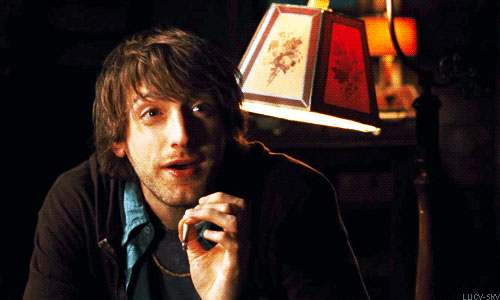Horrible Life Lessons One: Heroes of Film
The air is crisping, the leaves are brightening, and the air of every grocery store, sundry-mart or drugstore has been sweetened by piles of Halloween candies. It is harvest time, and the lessons of Horror are ripe and ready to be plucked by the unwary.
This month we take a look at the life lessons of horror, first with three movie heroes. Some of you may be skeptical. “Life lessons?! In horror movies?!” Indeed. I won’t belabor that reality, since I did that in this article, but horror movies are some of the most instructive type movies with which we entertain ourselves. “By entertaining imaginary dangers, we rehearse responses to actual or possible dangers,” said Dirk Eitzen (2010) of the Society for Cognitive Studies of the Moving Image. “In this way, we develop important survival skills [and] take situations, including painful or sad situations such as death, and think through how we might or should respond to them.”
Horror seeks to impart “Cognitive Mastery” of the inescapable hardships of life (though often exaggerated) as “by trying to comprehend it,” in story form “we take a step toward being able to manage or control it. This is a uniquely human capacity, but it addresses a basic biological need, by helping us feel and be safe” (Eitzen, 2010). It is from this perspective of Cognitive Mastery, and horror movies as problem solving tools that we bite into these dark, first fruits of our horror harvest.
Never Give Up
“I know you too well, Freddy. I know the secret now. This whole thing is just a dream. I take back every bit of energy I gave you. You’re nothing…”
-Nancy Thompson, A Nightmare on Elm Street
 Of all the horror movies, television, books and comics that I’ve read A Nightmare on Elm Street is my favorite. The struggle between child killer turned post-mortem nightmare slasher Freddy Krueger and Nancy Thompson, child of the sheriff who helped lead the lynch mob that killed him, is an epic that spans decades, though not all the movies in the series star Nancy. She is in the first movie, returns leading group therapy for the last “Elm Street Kids” in the super-cool A Nightmare on Elm Street 3: Dream Warriors and breaks the 4th wall playing herself, actress Heather Langenkamp in the mind-bending grand finale of the series New Nightmare. Throughout it all, Nancy demonstrates the problem-solving power of Resiliency.
Of all the horror movies, television, books and comics that I’ve read A Nightmare on Elm Street is my favorite. The struggle between child killer turned post-mortem nightmare slasher Freddy Krueger and Nancy Thompson, child of the sheriff who helped lead the lynch mob that killed him, is an epic that spans decades, though not all the movies in the series star Nancy. She is in the first movie, returns leading group therapy for the last “Elm Street Kids” in the super-cool A Nightmare on Elm Street 3: Dream Warriors and breaks the 4th wall playing herself, actress Heather Langenkamp in the mind-bending grand finale of the series New Nightmare. Throughout it all, Nancy demonstrates the problem-solving power of Resiliency.
“Resilient people do not let adversity define them,” says Hara Estroff Marano, Psychologist and Editor-at-Large of Psychology Today. “They find resilience by moving towards a goal beyond themselves, transcending pain and grief by perceiving bad times as a temporary state of affairs.” (Estroff Marano, 2003).
We can model Nancy’s growth from confused high school student, to seeker of knowledge about her past, her adversary and then how to survive. “It’s possible to strengthen your inner self and your belief in yourself, to define yourself as capable and competent. It’s possible to fortify your psyche.” In speaking of resiliency building toward “a sense of mastery” Dr. Estroff Marano unintentionally points to Nancy’s growth from surviving her first encounter with Freddy to returning as a psyche student, pursuing a career that continues the fight (2003). Dr. Estroff Marano offered the three step process of Psychologist Edith Grotberg, Ph.D., to build resiliency in the present, but also argued that “it’s definitely necessary to go back and reinterpret past events to find the strengths you have probably had within all along” (2003). This is most evident in New Nightmare when the character and actress unify and relive the past battles to finally end Freddy’s existence in both the movie narrative and our world.
Think Outside the Box
“You weren’t always this way, you were human once. You were all human! Remember your fear, your confusion!”
-Kristy Cotton, Hellraiser II
See what I did there? If not, you may not know that Hellraiser is all about boxes that are actually traps called Lemarchand’s boxes or just puzzle boxes. They’re literally Rubik’s Cubes from Hell. Solve the box, lose your soul to  eternal damnation on the edge where extreme pain meets extreme pleasure. Kirsty’s Uncle Frank solved a puzzle box, was brought to Hell and, once Kirsty’s dad and stepmom move into Frank’s old house, she comes face to face with Pinhead, he of the most fearsome visage and doofy name. While the story of Kirsty’s triumph is one of Clive Barker’s best, key to this topic is that it involves some serious outside the box thinking which goes beyond daily problem solving. “Ironically, it’s a cliché that means to think of clichéd situations in ways that aren’t clichéd,” according to Dustin Wax (2014), “conceptualizing problems differently; and understanding your position in relation to any particular situation in a way you’d never thought of before.”
eternal damnation on the edge where extreme pain meets extreme pleasure. Kirsty’s Uncle Frank solved a puzzle box, was brought to Hell and, once Kirsty’s dad and stepmom move into Frank’s old house, she comes face to face with Pinhead, he of the most fearsome visage and doofy name. While the story of Kirsty’s triumph is one of Clive Barker’s best, key to this topic is that it involves some serious outside the box thinking which goes beyond daily problem solving. “Ironically, it’s a cliché that means to think of clichéd situations in ways that aren’t clichéd,” according to Dustin Wax (2014), “conceptualizing problems differently; and understanding your position in relation to any particular situation in a way you’d never thought of before.”
Barker took clichés like the drug addict, the wicked step brother, pleasure and pain, and even the devil and reconceptualized them in Hellraiser and Hellraiser II. In thinking outside the box we must live beyond our own ideas, concepts and comfort. The more we do it, the less we become trapped in puzzle boxes of our own creation. “Thinking outside the box starts well before we’re ‘boxed in’ – that is, well before we confront a unique situation and start forcing it into a familiar ‘box’ that we already know how to deal with. Or at least think we know how to deal with” (Wax, 2014). In that final twist of reconceptualized cliché, Pinhead had thought he knew how to deal with this classic damsel in distress in Hellraiser but Kirsty was much more than he bargained for.
Find the Fun
“Hey, shh, no. I totally get it. I’m sorry I let you get attacked by a werewolf and then
ended the world. [incredulous] Giant evil gods.”
-Marty Mikalski, Cabin in the Woods
Clive Barker and Joss Whedon share a “…love of subverting clichés while embracing them and teasing out their deeper meaning,” reviewer Keith Phipps said of Whedon’s Cabin in the Woods. While A Nightmare on Elm Street and Hellraiser both came out in the 80s, Cabin in the Woods is much more recent (2012) and it’s hard for me to unpack it without spoiling some of what makes it truly one of the best horror movies in the last 20 years. Not kidding. Every time I write these articles I try not to draw back to the 80s and fail. But Cabin in the Woods, and pot-smoking geek Marty Mikalski, are totally worth the watch.
You’ve seen it before, the jock, the geek the smart girl…ect. go on a camping trip to a remote cabin deep in some forested area. It goes from bad to worse, similar in concept to Scream’s rules of slasher films, but still goes in ways that no one expects. Through all the horror, blood and world-ending, Marty fights on, both physically and mentally, with his wit as his weapon. Dr. Grenville-Cleave would endorse this approach. “Positive emotions are more important than we have traditionally thought. They don’t just make us feel good, they do us good too” (2013).
I won’t tell you if Marty makes it to the end, only that through it all he survives with a grin and a bong, trying to put a positive spin on all that he faces, proving that “…happiness is not something that happens. It does not depend on outside events, but, rather, how we interpret them” (Grenville-Cleave, 2013).
In her article Dr. Grenville-Cleave quotes Flow, Csikszentmihalyi’s formative work on achieving happiness, but this quote applies to all of the life lessons above. “People who learn to control inner experience will be able to determine the quality of their lives, which is as close as any of us can come to being happy” (1992). As we draw closer to saying “Happy Halloween!” across the country, I encourage you to check out these horrible life lessons to help control that inner experience, face the outer hardships or find new ways to solve problems and thus, be happier through it all. Just like Marty.
__________________________________________________
Eitzen, Dirk. (2010). The Fun of Fear: Horror, Suspense, and Halloween. Society for Cognitive Studies of the Moving Image. Retrieved From: http://scsmi-online.org/forum/the-fun-of-fear-horror-suspense-and-halloween
Estroff Marano, Hara. (2003) The Art of Resilience. Psychology Today. Retrieved from: http://www.psychologytoday.com/articles/200305/the-art-resilience
Grenville-Cleave, Bridget (2013) Five Reasons to Focus on Flow. Positive Psychology News. Retrieved From: http://positivepsychologynews.com/news/bridget-grenville-cleave/2013022625517
Phipps, Keith (April 12, 2012). “The Cabin in the Woods”. The AV Club. Retrieved from: http://www.avclub.com/review/the-cabin-in-the-woods-72287
Wax, Dustin (2014) 11 Ways to Think Outside the Box. Lifehack.org Retrieved From http://www.lifehack.org/articles/productivity/11-ways-to-think-outside-the-box.html



